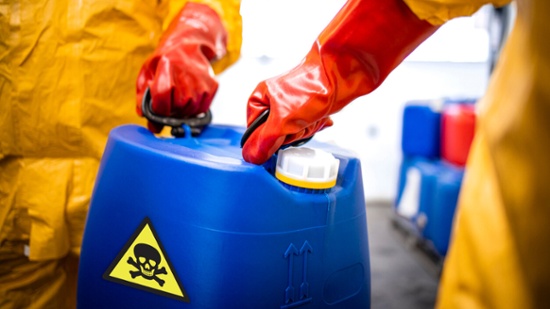Your employees have a duty to stay safe at work — and not behave in a way that could affect either their own health and safety, or the health and safety of others. But the responsibility is two-fold, as workers must also be properly trained and supervised to ensure a healthy, safe working environment. This post identifies the overall WHS responsibilities of workers as outlined in the Work Health and Safety Act — with a specific focus on how they relate to chemical hazards. You may use this article as a framework for your worksite safety policies, induction programs, and chemical hazard training.
IMPORTANT: You can find out more about the Work Health and Safety laws in your state or territory by visiting your local regulator online.
Responsibilities Of Workers
To learn more about the duties of person handling hazardous substances, we’ll take a look at the work health and safety (WHS) duties — and how risks relating to hazardous substances must be managed in the workplace.
The WHS Act in every state and territory in Australia has four essential requirements for workers/employees.

In Australia, the WHS Act details requirements for workers and employees.
These responsibilities are:
- Take reasonable care for their own health and safety while at work.
- Make sure their behaviour and conduct does not place other people at risk.
- Comply with safety instructions from managers and supervisors.
- Co-operate with safety policies and operating procedures.
REMEMBER: In 2011, Safe Work Australia developed the model work health and safety (WHS) laws to be implemented across Australia. To become legally binding the Commonwealth, states and territories must separately implement them as their own laws. Safe Work Australia is responsible for maintaining the model WHS laws, but we don’t regulate or enforce them.
Examples of WHS Responsibilities of Workers
Let’s have a look at a few hypothetical examples of non-compliance to give you an idea of how it works.
EXAMPLE 1: A worker is decanting a corrosive cleaning agent and doesn’t bother to wear the PPE they have been issued and trained to wear. Failing to take care of their own health and safety.
EXAMPLE 2: Suppliers delivering LPG cylinders throw the bottles over the side of the truck. Actions that place other people at risk. Not following rules and safety instructions.
EXAMPLE 3: Against site rules explained in a safety induction, a contractor uses their mobile phone right in front of a petrol refilling station. Not complying with safety instructions.
EXAMPLE 4: A worker leaves bottles of acetylene and oxygen connected on a trolley in the workshop overnight instead of disconnecting them and separating them for storage. Not following safe operating procedures.
In each of the four examples the worker, contractor or supplier has a clear WHS duty and responsibility but has failed to comply. WHS duties are legal responsibilities and non-compliance can be punishable by law.
NOTE: Contractors and suppliers also have WHS duties and responsibilities as they relate to the tasks they are performing at your worksite.
WHS Non-Compliance
Apart from getting staff to understand that unsafe work practices can be fatal, your training efforts should remind workers of the significant fines and possible jail sentences for not complying with mandatory safety policies. Just failing to comply with WHS duties can result in a $50,000 fine; while reckless behaviour that places a co-worker, customer, or contractor at risk could see a worker fined up to $300,000 plus spending 5 years in jail.
Remember: If you’re seeking further WHS information about managing chemical risk, download the Model Code of Practice: Managing Risks of Hazardous Chemicals for detailed guidance on how to assess and control risk.
What are the Penalties for Non-Compliance with WHS?
The penalties for workers (and contractors too) who fail to meet their WHS responsibilities are listed in the table below:
| Offense | Fine | Jail Term |
| Reckless behavior that exposes some to a risk of death, serious injury, or illness | $ 300, 000 | 5 years |
| failing to comply with a health and safety duty that exposes someone to a risk of death, serious injury, or illness | $ 150, 000 | N/A |
| failing to comply with a health and safety duty | $ 50, 000 | N/A |
NOTE: The fines displayed above relate to workers and contractors that have a WHS responsibility. Corporations, business owners, directors and officers face much steeper penalties.
Hazardous Substance Safety Training
A bit like the saying ’it’s a journey not a destination’, consider your safety training never fully completed. Laws change, new chemicals are introduced to the job site, and staff can slacken off when not properly motivated or supervised.
Adequate chemical safety training will include a combination of the following:
1. Induction Training
Induction training covers the safety rules of the site and ensures that staff and contractors have a clear understanding of their WHS responsibilities. Your safety inductions should introduce the chemical hazards present on the site, banned substances and ignition sources; as well as the type of PPE to be used or worn.
2. Job Specific Training
This type of training is specific to the employee and the actual job they will be doing.

Part of your chemical safety training should be the development of job specific training to protect your employees from harm.
Usually conducted one-on-one or in small groups, employees learn about:
- Chemical Hazards: Job specific training should include detailed guidance on chemical hazards. This will include how to safely handle the chemicals they use, such as flammable and combustible substances, toxic chemicals or corrosive substances. Training should also include the identification and awareness about the dangers of ignition sources; the flashpoint of flammable and combustible liquids; the dangers associated with incompatible substances and reactive chemicals.
- Safety Data Sheets (SDS): Staff training should focus on safety data sheets: what they are, how to understand them, where they are, how to use the register of hazardous substances.
- Personal Protective Equipment (PPE): When working with hazardous substances, staff need to have the correct personal protective equipment. They must also be knowledgeable about how the PPE protects them from the chemicals they use, and how to put it on and take it off properly. Also include guidance on where to find the personal protective equipment, how to keep it clean, where to store it, and what to do if it’s damaged.
- Safety Procedures: Include the appropriate safety procedures for the job, such as keeping gas cylinders upright and restrained on a gas bottle trolley; wearing thermal gloves when disconnecting LPG cylinders; labelling chemicals dispensed into portable containers; correctly bonding fuel nozzles and dispensing equipment to prevent static electricity.
3. Toolbox Talks
A ‘toolbox talk’ is a short, informal meeting usually held at the beginning of a shift. Toolbox talks are an excellent way of refreshing your workers’ knowledge of chemical hazards, as well as performing last minute safety checks (eg, everyone has their eye guards, chemical exposure levels are good). It’s also an opportunity for experienced workers to exchange information and remind newer staff of their WHS responsibilities.
4. Emergency Responses and Drills
Staff need to know what to do in a chemical emergency; including the exact location of emergency showers, eye wash stations, and first aid kits plus know how to use them. Staff should undertake regular drills where they are actually using the equipment in a simulated emergency — both on themselves or applying treatment to co-workers.
IMPORTANT: To learn more about WHS responsibilities, for both employees and a person conducting a business or undertaking, visit the Safe Work Australia website.
Duties Of Person Handling Hazardous Substances
Do you need to learn more about storing and handling hazardous substances in a safe and compliant way? Looking to find out more about managing the chemical hazards at your workplace? Our free eBook offers a comprehensive view of how to effectively manage the risk of hazardous chemicals in your workplace while maintaining your WHS responsibilities. Grab our helpful guide today to discover more about reducing chemical risk in your operations.
Joining the team as a Dangerous Goods Storage Consultant, Melissa Hampton became Storemasta's Marketing Manager in late 2021. With extensive knowledge and experience in chemical compliance, Melissa is responsible for leading the Marketing team and helping shape their marketing strategy. In her spare time, you can find Melissa hiking, swimming and enjoying the great outdoors in beautiful north-west Tasmania.
